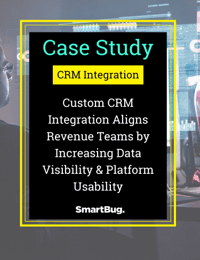
Software migration and the process of moving systems and records from one software to another is indisputably complex, and it may result in costly delays if you don’t have plans in place to solve for common challenges. To help you with your migration efforts, here’s a list of the most frequent software migration challenges and how to address them.
Challenge #1: Lack of Participation from Management and Key Players
Effective migration is a team effort and involves all parties. Regardless of your business goals, your migration project cannot simply involve management instructing the software engineering team to make a new system that resembles the old one. Directing a team of developers to the existing software and leaving them to it is not enough, and it will result in frustration and misunderstandings.
Key players within the management team must actively participate in the creation of the migration plan. Management team buy-in is important to overall migration success. Schedule time throughout the process to discuss which existing features the team wants to keep, and which functionalities can be removed because they no longer serve the business. Sitting down and prioritizing features from the existing system will reduce oversights, ensuring the new system meets expectations and effectively serves business goals.
Challenge #2: Data Migration
Determining how you will move a significant amount of accumulated data is a common challenge. A considerable risk is data loss; the loss or corruption of a single record could have severe consequences for your business.
Ensure you develop a concrete plan before beginning data migration. Once you begin the migration, you must reconcile your data and test often. Your output must match, and if it doesn’t, you need to address it immediately. Pay close attention when mapping your fields from one system to another to ensure they line up, and use appropriate tools, data validation and testing techniques to maintain accuracy.
Though the initial investment for testing and quality assurance may seem high, the cost of missing data would be much higher. Test early and often. If you experience any glitch during the migration process, you must test using a significant value.
Challenge #3: System Migration
Legacy migration or cloud migration (making a move from a legacy system to a cloud system) is a significant undertaking that requires a great deal of skill and a large budget. There are several activities to complete before the cloud system can replace the previous one. In addition to developing the system, employees will need to be trained, the system maintained, and the support system established. This must all be put into place before shutting down the legacy system.
Planning is the only way to prevent issues down the road. You must have a long-term plan in place outlining stages to prepare employees and customers, if applicable. With time to fill in gaps and allow employees to embrace the new system, you’ll experience a more seamless execution.
Challenge #4: Underestimating Scope and Budget
Software migration is a big project that requires a big budget. One of the challenges many experience is underestimating the size and budget of software migration. This can result in shortcuts or costly errors. According to a Lemongrass survey, successful cloud migration for enterprises costs between $100,000 and $250,000.
When creating a detailed plan, you must allocate the proper time and resources for the project. The more detailed your data migration plan is, the easier it is to define your budget accurately.
Challenge #5: Business Continuity
Likely one of your fears with software migration is not maintaining your day-to-day operations during the process. Losing a day or causing client interruptions could be disruptive and costly. Before shutting down your legacy system, you need to ensure your new system is working correctly. But what if you run into trouble and there are issues with the release?
You must have a plan in place in the event things don’t go as planned. You need to map out contingency and continuity plans for each phase to address issues before they happen. A proactive approach will reduce or prevent interruptions.
Careful Planning for a Successful Migration
Cloud-based software or cloud systems provide you with on-demand services and databases. Although it requires an initial investment to migrate, a move to cloud computing provides several benefits.
It can feel overwhelming, but there are proactive steps you can take to avoid common software migration challenges. With participation from key players, testing, a comprehensive employee induction plan, an understanding of the scope and budget, and a solid contingency plan, you can successfully migrate your software.
About the author
Courtney Fraas was formerly a SmartBug Media Inbound Marketing Strategist based in Savannah, GA. With eight years of marketing experience, Courtney specializes in copywriting, visual design and project management. When she isn’t crafting customer-focused messaging, Courtney is busy traveling near and far, playing with her pup, and becoming an expert Airbnb host. Read more articles by Courtney Fraas.








-2.png?width=800&length=800&name=Blog%20header%20image%20(1)-2.png)